Quote:
Originally Posted by Efthreeoh

So again, without insult or inuendo, I will eplain why you are wrong and have not in any of your posts "kicked the legs out" of anything.
Here's your complete 3rd post (insults retained too):
First off you’ve disassociated the use of the two technologies under discussion here, whereas BMW in the press release speaks to both the use of a self-supporting monocoque frame WITH bolt-on, no load-bearing plastic panels for the body as a new and innovative way to build an automobile. The concept of a monocoque (unit construction) body certainly is not new (almost every car since the 50’s is build that way) and there were monocoque chassis cars well before 1983. But the point I made was the combined use of a monocoque frame AND plastic panels was first developed and put into mass production by GM with the Fiero. I’ve not claimed the Fiero was the first monocoque framed (or chassis) car.
Second, you’re just plain wrong about the use of plastic panels in mass produced cars. If you count the Corvette, then sure there was use of plastic in car construction, but the Corvette is fiberglass and not of a monocoque frame design. The C5 did use Sheet Molded Compound (SMC) for the clamshell hood (as some of the panels of the Fiero were SMC too). But we all know who builds the Corvette and the C5 was introduced about the same time as the Fiero as a 1984 model.
And then you suggest Pontiac used other companies concepts to achieve it high fuel mileage rating, but alas you cite no such technology. The Fiero used GM’s aged Iron Duke four banger and corporate V6 engines with contemporary for the time intake and exhaust technologies.
And then finally there's the picture of the flaming 2M4. Yes, the first-year production Fieros had issues with engine fires due to poorly manufactured connecting rods that would break, hole the block, and allow oil to catch fire on the catalytic converters - everyone knows this; but your picture clearly shows the blue Fiero on fire inside the cabin. This interior fire could have been from a poorly extinguished cigarette, or a badly wired after market stereo; we don't know. But it certainly wasn't an engine fire since the BACK of the car is not on fire.
And just to reiterate, my discussion has never been about the Fiero and how it matches up, or not against the Z1; it's been about who developed the construction concept and use of plastic body panels, and who brought it to market first. You're the one who brought the comparason of the two cars into the discussion and have repeatedly infered the Fiero is a "turd". None of what you've posted has countered my point.
|
Lot's of back peddling and false beliefs in the above series of statements. A sign you've painted yourself into a corner and are looking for new ground. You've slithered pretty far from your first post in this thread:
Quote:
Originally Posted by Efthreeoh

Other than it being a roadster with doors that slid down into the frame what is unique about the car? The construction design of a "self-supporting monocoque" with plastic body panels had already been pioneered by General Motors and put into production with the 1984 Pontiac Fiero and continued in production well into the 1990's under the guize of Saturn cars.
|
With the genesis of your argument in bold above and where my cross-hairs have remained, lets take a moment to review history. Below, the who was "first" is not really relevant, however each date before the 1984 Fiero is.
<< Rewind <<
1923: Lancia Lambda becomes the first monocoque-type body used in production.
1934: Chrysler and CitroŽn build the first mass-produced monocoque vehicles.
1936: Otto RŲhm, a German Scientist, who perfected and created "PEXIGLAS" introduced it commercially where it began being used by automotive and aviation industries.
1939: Fisher Body and RŲhm & Haas create two plexiglass car bodies
for GM to provide an X-ray view of GM’s latest steel bodied cars to showcase the engineering, features and sales points of their C-body and B-body cars.
 1941:
1941: Henry Ford experiments with making plastic parts for automobiles and unveils the "Soybean Car" a plastic-bodied car at Dearborn Days, an annual community festival. The car had a total of 14 plastic panels attached on a tubular frame.
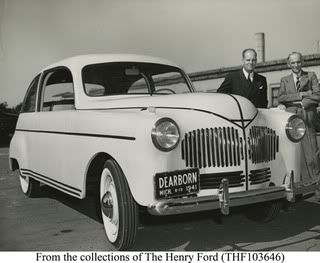 >> FAST FORWARD >>
1957:
>> FAST FORWARD >>
1957: Lotus introduces the Elite, an ultra-light two seat coupe with it's most distinctive feature being a reinforced plastic material for the entire monocoque chassis.
 1968:
1968: CitroŽn introduces the DS 21 PALLAS. A monocoque chassis available with a plastic roof panel.
 1968:
1968: Porsche introduced the 914 prototype, a two seat, mid-engine sports car.
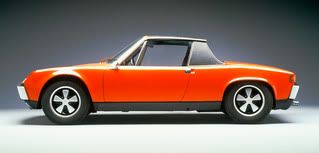 1969:
1969: Fiat introduces the X1/9 as a concept sports-car with two seats and mid-engine .
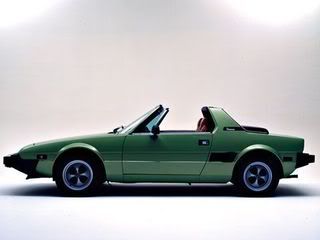 >> FAST FORWARD >>
1982:
>> FAST FORWARD >>
1982: CitroŽn introduces the BX that makes extensive use of plastic body panels (bonnet, tailgate, bumpers). *CitroŽn mass produced 2,315,739 of BX in the 12 year production run.
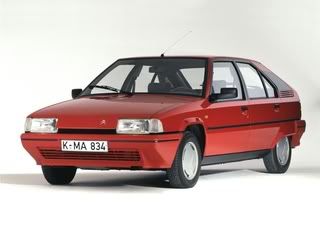 1982:
1982: Porsche develops the 956 an aluminum monocoque chassis with glass resin-formed plastic body panels and takes it racing.
 1983:
1983: Honda introduces the CRX that featured new-tech plastic body panels for the front fenders and "header" panel between the headlamps.
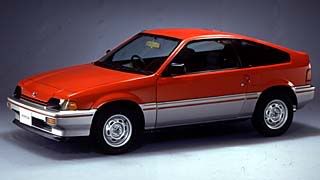
Your primary argument is:
With the Fiero, GM pioneered the construction design of a self-supporting monocoque with plastic body panels. Let's break that down one by one and check against history:
GM Fiero "pioneered" a self-supporting monocoque -
NOPE
GM Fiero "pioneered" a car with plastic body panels -
NOPE
GM Fiero "pioneered" a monocoque with plastic body panels -
NOPE
GM Fiero "pioneered" a monocoque
and all plastic body panels -
NOPE
GM Fiero "pioneered" a two seat mid-engine sports car -
NOPE
GM Fiero "pioneered" a two seat mid-engine sports car with monocoque and plastic body panels -
NOPE
You flame the Z1's marketing for claiming to be innovative. Then you introduce the Fiero suggesting that it pioneered the very ideas used in the Z1.
As illustrated, the reality is that GM and the nerdy Fiero design team simply repackaged and leverage 40+ year old ideas and technologies from their original pioneers.
Simply stated, the very same argument you use against the Z1 can factually be applied to take out the Fiero. In other words, you don't have a single leg to stand upon.....
That my friend is "checkmate"
